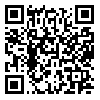BibTeX | RIS | EndNote | Medlars | ProCite | Reference Manager | RefWorks
Send citation to:
URL: http://jdm.tums.ac.ir/article-1-5265-en.html
Background and Aims: The main cause of erosion is acid exposure . Side effects of erosion necessitate therapeutic agents’ uses. The aim of this study was to investigate the effects of nano- hydroxy apatite in tooth remineralization following exposure to soft beer.
Materials and Methods: This in vitro experimental study was conducted on 18 human impacted third molars that had been surgically extracted. The microhardness of specimens was measured. Then teeth were exposed to soft beer and their secondary microhardness was measured. The teeth were divided into 2 groups (water and nano-hydroxy apatite solution) and were placed on 9 orthodontics appliances and delivered to 9 volunteers. These volunteers placed the tooth on one side in water for 5 minutes and the tooth in opposite side in nano-hydroxyapatite solution. This application was repeated 6 times a day for 10 days. The microhardness of teeth was measured again. Data were analyzed using Paired T-test.
Results: The tooth enamel microhardness reduced after exposure to soft beer significantly (P=0.04). The microhardness of 9 teeth after being in water showed significant changes (P=0.012). The microhardness of 9 teeth significantly changed after exposure to nano -hydroxyapatite solution (P=0.001) .
Conclusion: Based on the results of this study, 10% solution of nano- hydroxy appatite could restore the erosive lesions .
Received: 2014/12/22 | Accepted: 2014/12/22 | Published: 2014/12/22
| Rights and Permissions | |
 |
This work is licensed under a Creative Commons Attribution-NonCommercial 4.0 International License. |




